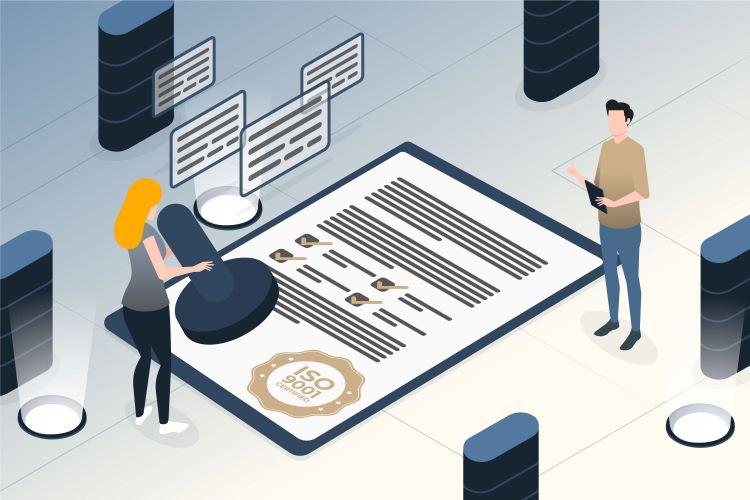
To sustain compliance and secure sensitive data, it is vital for CISOs to keep tracking the firm's security posture, train staff, and act on legislative shifts.
In today's digital landscape, businesses face an ever-expanding display of regulatory compliance requirements to safeguard sensitive data and ensure privacy. Compliance with regulations such as the General Data Protection Regulation (GDPR), the California Consumer Privacy Act (CCPA), or industry-specific standards has become crucial to maintaining a robust cybersecurity posture. Chief Information Security Officers (CISOs) play a pivotal role in effectively understanding and implementing these regulations.
Understanding the compliance landscape
The compliance landscape is constantly evolving, and staying up-to-date with the latest regulations is imperative for CISOs. Organizations operating globally must be aware of international standards, while those within specific industries must adhere to sector-specific regulations. CISOS should understand the compliance requirements relevant to their organization, as non-compliance can result in severe penalties and reputational damage.
Building a compliance framework
To navigate regulatory compliance, CISOs should establish a robust compliance framework tailored to their organization's needs. This framework should encompass policies, procedures, and controls that align with the specific regulations. It should also include mechanisms to monitor compliance, conduct regular audits, and track remediation. CISOs can ensure a proactive and systematic approach to meeting compliance obligations.
Data privacy and consent
Many regulations emphasize data privacy and require organizations to obtain explicit consent for collecting, processing, and storing personal information. CISOs should work closely with legal and privacy teams to implement robust data protection measures like encryption, access controls, and anonymization techniques. Transparency in data handling practices and clear communication with users regarding their rights and data usage are vital to maintaining compliance.
Risk assessment and management
CISOs should perform regular risk assessments to identify vulnerabilities and potential compliance gaps. By understanding the specific risks associated with their industry, technology infrastructure, and data handling practices, CISOs can prioritize security initiatives and allocate resources effectively. Risk management strategies should align with compliance requirements, including implementing security controls and incident response plans.
Third-party risk management
Organizations often rely on third-party vendors and partners, introducing additional compliance challenges. CISOs should develop a comprehensive third-party risk management program that assesses vendors' security practices and compliance posture. It involves conducting due diligence, defining contractual obligations, and monitoring vendor activities to ensure compliance with relevant regulations. Regular audits and assessments of third-party systems and processes should also be executed to maintain security and compliance standards.
Continuous monitoring and compliance reporting
CISOs should establish mechanisms for continuous monitoring of security controls and compliance indicators. It includes leveraging security information and event management (SIEM) systems, intrusion detection and prevention systems, and log analysis tools to detect and respond to security incidents promptly. Additionally, CISOs should implement reporting mechanisms that provide accurate and timely information to demonstrate compliance to regulatory authorities, stakeholders, and customers.
Staff training and awareness
Ensuring employees know compliance requirements and their role in cybersecurity is essential. CISOs should prioritize ongoing training programs to educate employees about data protection, privacy regulations, and best practices for handling sensitive information. Regular awareness campaigns and simulated phishing exercises can reinforce good security behaviors and foster a security-conscious culture within the organization.
Collaboration with legal and compliance teams
CISOs must establish strong relationships with legal and compliance teams within the organization. By collaborating closely, these teams can align security practices with legal obligations and guide them to navigate complex compliance landscapes. Regular communication and knowledge sharing between these teams is crucial to maintaining compliance while implementing effective cybersecurity measures and strategies.
Engaging with regulatory bodies and industry networks
CISOs should actively engage with regulatory bodies, industry associations, and networks to stay informed about upcoming regulatory changes, industry best practices, and emerging compliance requirements. Participating in conferences, workshops, and forums focused on cybersecurity and compliance allows CISOs to gain insights, share experiences, and establish valuable connections with peers facing similar challenges.
Conducting regular compliance assessments
Regular compliance assessments are critical to evaluate the effectiveness of security controls and ensure ongoing compliance with regulations. CISOs should establish a structured assessment program that includes internal audits, vulnerability assessments, and penetration testing. These assessments provide visibility into potential compliance gaps, allowing organizations to take corrective actions and continuously improve their security posture.
Implementing privacy by design
Privacy by Design is a proactive approach that embeds privacy and security considerations into designing and developing systems, processes, and applications. CISOs should advocate for Privacy by Design principles within their organization, working closely with development teams to integrate privacy and security controls from the outset. This approach minimizes the risk of non-compliance and data breaches while enhancing user trust.
Establishing incident response and breach notification protocols
CISOs must have a well-defined incident response and breach notification protocols in place in the event of a cybersecurity incident or data breach. These protocols should comply with regulatory requirements, including timely reporting to authorities and affected individuals. By establishing clear procedures, organizations can minimize the impact of incidents, demonstrate compliance, and rebuild trust with stakeholders.
Monitoring regulatory changes and adapting compliance strategies
Regulatory environments are always changing due to the frequent introduction of new regulations and changes. CISOs must stay vigilant and continuously monitor these changes to ensure ongoing compliance. By proactively assessing the impact of regulatory updates and adapting compliance strategies accordingly, CISOs can maintain a proactive and agile approach to compliance management.
Navigating regulatory compliance while maintaining robust cybersecurity practices is complex for CISOs. By understanding the compliance landscape, building a compliance framework, conducting risk assessments, implementing privacy measures, and encouraging collaboration, CISOs can enhance their organization's security posture while meeting regulatory obligations.
Image Source- Freepik

 In
In
Add new comment